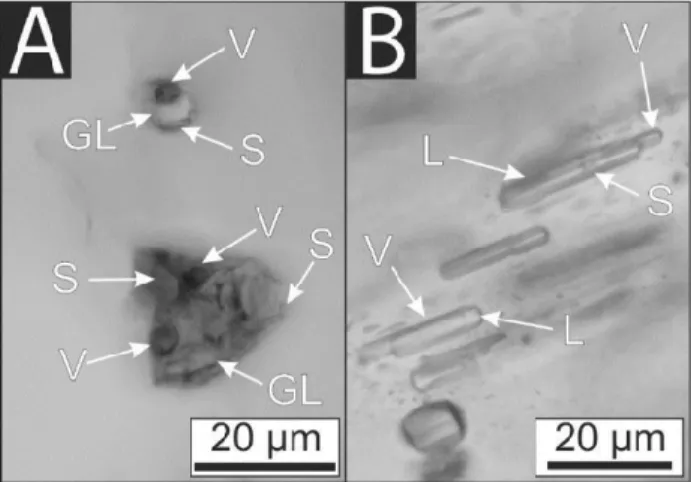7
Unraveling a hydrous alkaline metasomatic agent beneath the Styrian Basin: an inclusion study from mantle xenolith
Aradi, L.E.1*, Berkesi, M.1,2 1
1L University, Hungary;
2 2Oscope Research Group, Geodesic and Geophysical Institute, Research Centre for Astronomy and Earth Sciences, Hungarian Academy of Sciences, Sopron, Hungary; *aradi.laszloelod@ttk.elte.hu
The lithospheric mantle was sampled by Plio- Pleistocene alkali basalts across the Styrian Basin (SB), which brought upper mantle xenoliths to the surface. The SB is the westernmost sub-basin of the Pannonian Basin System, located in the transitional zone between the central Pannonian Basin and the Eastern Alps. The lithospheric mantle beneath the SB overlies a region with a fast seismic anomaly, which was interpreted previously (e.g. Qorbani et al., 2015) as a potential remnant of the detached Penninic slab.
In the SB mantle xenolith suite (Aradi et al., 2017) a group of phlogopite-bearing, amphibole-rich xenoliths was found. These xenoliths could be divided into two subgroups, based on the presence or absence of Cl-rich apatite. Relying on the geochemistry of the amphiboles, these rocks were formed during metasomatism, which could have been caused by infiltration of a volatile-rich alkaline mafic melt. This melt reacted with the mantle peridotite mainly via reactive porous melt flow, causing the transformation of Al-rich spinels, orthopyroxenes and clinopyroxenes into Cr-rich spinels, phlogopite and pargasite. Further from the metasomatic agent, the melt might have fractionated along the mantle column, causing even more enrichment in H2O, CO2 and fluid mobile elements (e.g. U, Cl, P), but depletion in basaltic elements (such as Fe and Ti) and potassium. This fractionation led to the formation of the apatite- bearing subgroup.
In the apatite-free xenoliths several primary melt inclusions were found in the newly formed amphiboles (Fig. 1/A), and secondary melt inclusions in the ortho- and clinopyroxenes. The primary inclusions in the amphiboles are partially crystallised, besides silicate glass and CO2-rich bubble, clinopyroxene daughter phase was recognised. Secondary inclusions of the pyroxenes are glassy and contain a CO2-bearing bubble.
In the apatite-bearing xenoliths primary and pseudosecondary inclusions were found (Aradi et al., 2019; Fig. 1/B). These inclusions, besides the dominating CO2 (>98 mol. %), contain small amount of H2O (<1.2 mol%), N2 (<0.1 mol%) and SO42-. The latter one dissolved in the H2O-rich fluid.
The solid phases of the fluid inclusions in the amphibole consist mostly of different carbonates (magnesite, Na-bearing dawsonite, nahcolite and natrite) and sulphates (anhydrite and Na-bearing thenardite-burkeite). To our best knowledge, such Cl--free, but Na+ and SO42--bearing fluid composition was not described previously in
mantle fluids. Along with the formation of amphiboles, the coexisting fluid phase become enriched in volatiles (C-O-N-S), Na+, HCO3- and SO42-, and then trapped in the amphiboles. Thus, this fluid represents the residual portion of the fractionated volatile-rich alkaline mafic melt (represented by the melt inclusions), which metasomatised the SB subcontinental lithospheric mantle (Aradi et al., 2019).
Acknowledgement
This work was completed in the ELTE Institutional Excellence Program (1783-3/2018/FEKUTSRAT) supported by the Hungarian Ministry of Human Capacities. M. Berkesi was supported by the Bolyai Postdoctoral Fellowship Program.
References
Aradi L. E. et al. (2017) Tectonics 36:2987-3011.
-49.
Qorbani E. et al. (2015) Earth Planet. Sc. Lett. 409:96- 108.
Fig. 1. A) Partially crystallised primary melt inclusions in amphibole. B) Pseudosecondary fluid inclusions in amphibole, occurring along the cleavage planes of the host amphibole. L - liquid; V - vapour; S - solid; GL - glass.
